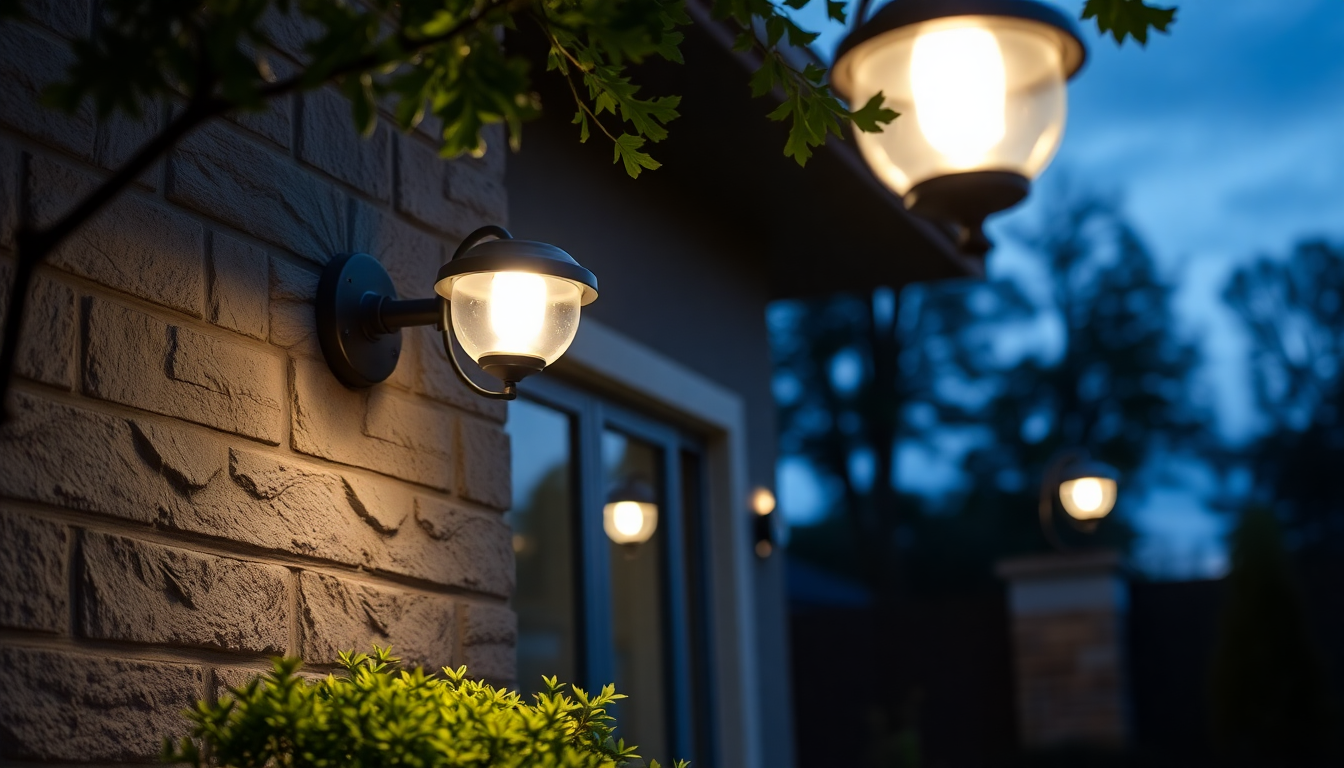Introduction
In the rapidly evolving landscape of home security, 2025 marks a pivotal year for residential safety innovations. Among these breakthroughs, AI-powered night lighting technologies stand out as game-changers. These sophisticated systems are redefining how homeowners protect their properties, providing smarter, more responsive, and energy-efficient solutions. As urban areas grow more complex and security concerns increase, integrating advanced AI-driven lighting into residential security plans has become essential for modern homeowners seeking peace of mind and technological edge.
The Evolution of Night Lighting in Home Security
Traditionally, outdoor lighting played a passive role—simply illuminating dark areas to deter intruders. However, with technological advancements, lighting has transitioned from static fixtures to intelligent systems capable of dynamic responses to environmental stimuli. Early automation included timers and basic motion sensors, but these solutions lacked nuance and adaptability. Today, AI-powered night lighting elevates this concept further by enabling real-time analysis, learning, and decision-making that mimic human judgments with remarkable accuracy.
How AI-Powered Night Lighting Works in 2025
The core of AI-enabled lighting systems encompasses powerful sensors, machine learning algorithms, and seamless integration with broader home security ecosystems. These systems operate through several key mechanisms:
- Advanced Motion Detection and Behavior Recognition: Proprietary AI algorithms analyze movement patterns to distinguish between ordinary activity and potentially suspicious movements, reducing false alarms.
- Real-Time Environmental Adaptation: Lighting automatically adjusts brightness, color, and timing based on factors like outdoor illumination levels, weather conditions, and homeowner routines.
- Facial and Object Recognition: High-resolution cameras equipped with AI analyze faces and objects to identify residents versus strangers or animals, enhancing target-specific responses.
- Predictive Analytics & Anomaly Detection: Machine learning models predict unusual activity patterns, enabling preemptive lighting responses and alerting homeowners proactively.
Benefits of Integrating AI Night Lighting into Home Security
Deploying AI-powered lighting systems yields a multitude of advantages that significantly enhance overall residential security:
- Deterrence of Intruders: Sudden, responsive illumination startles potential intruders, increasing the risk they are detected and discouraging illegal activity.
- Enhanced Video Surveillance: Well-lit areas improve CCTV footage quality, facilitating better identification and evidence collection.
- Energy Efficiency & Cost Savings: AI systems intelligently limit unnecessary lighting, lowering energy consumption and reducing utility bills.
- Increased Safety & Accessibility: Automated lighting ensures pathways, stairs, and entrances are safely illuminated during night hours, minimizing accidents.
- Seamless Home Automation Integration: These lighting solutions work with smart home devices, voice assistants, and security apps for a unified user experience.
Key Technologies Shaping AI Night Lighting in 2025
The market is flooded with innovative solutions that incorporate AI for smarter security. The leading technologies include:
- NeuraLight AI Systems: This system provides adaptive outdoor lighting with facial and activity recognition, allowing personalized security responses.
- BrightGuard AI Security Lights: Designed with machine learning sensors that learn and optimize their patterns over time, improving reliability and energy efficiency.
- EcoSecure Smart Lighting: Combines eco-friendly LED technology with AI analytics for sustainable, intelligent outdoor lighting that adapts to environmental changes.
- HomeSecure AI Modules: Customizable modules that integrate seamlessly with existing smart home ecosystems, offering centralized control and automation features.
- AI-Integrated Dusk-to-Dawn Systems: These systems automatically turn on at sunset and turn off at sunrise, with intelligent adjustments based on weather and activity detection.
Installing and Optimizing AI Night Lighting at Home
For homeowners looking to upgrade their security setup with AI night lighting, following a strategic approach is essential:
- Conduct a Security Assessment: Evaluate vulnerable areas and define specific safety goals—whether deterring intruders, enhancing CCTV footage, or improving pathway visibility.
- Select Compatible Systems: Choose AI lighting that integrates with your existing smart home setup, security cameras, alarms, and automation platforms.
- Professional Installation: Engage experienced installers familiar with AI security solutions to ensure optimal placement and configuration.
- Continuous Monitoring & Adjustment: Use dedicated apps or dashboards to monitor system performance, tweak settings, and receive updates for improved functionality.
The Future Outlook of Residential Security in 2025 and Beyond
The integration of AI with night lighting is just the beginning. Upcoming innovations include:
- Predictive Security Systems: Systems that anticipate potential threats based on behavioral data, enabling preemptive measures.
- Autonomous Security Drones: AI-powered drones equipped with lights and cameras, capable of patrolling and surveilling properties autonomously.
- Deep Learning Surveillance: Enhanced AI models that continuously learn from new data, offering increasingly accurate threat detection and response.
- Integration with Smart City Infrastructure: Residential systems connecting with broader city security networks for coordinated responses.
Conclusion
AI-powered night lighting technologies are revolutionizing residential security in 2025 by providing intelligent, adaptive, and energy-efficient solutions. These systems elevate home protection from passive lighting to active security measures that respond dynamically to environmental cues and behavioral patterns. Investing in AI-driven outdoor lighting not only deters criminal activity but also enhances safety, convenience, and environmental sustainability. As technology continues to advance, the homes of the future will be smarter, safer, and more resilient thanks to the power of artificial intelligence.




Dejar un comentario
Todos los comentarios se revisan antes de su publicación.
Este sitio está protegido por hCaptcha y se aplican la Política de privacidad de hCaptcha y los Términos del servicio.